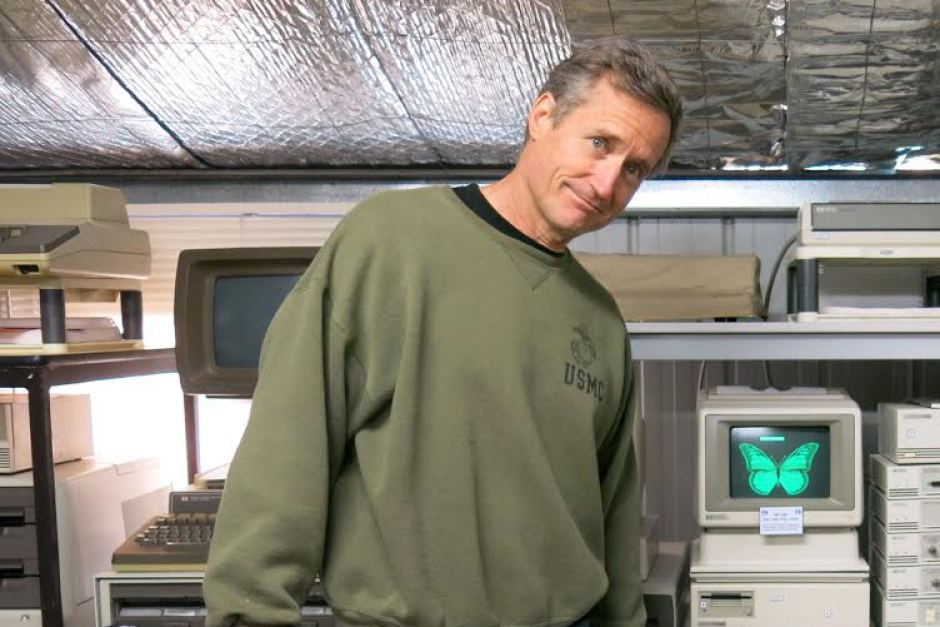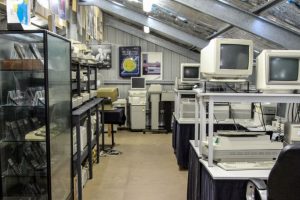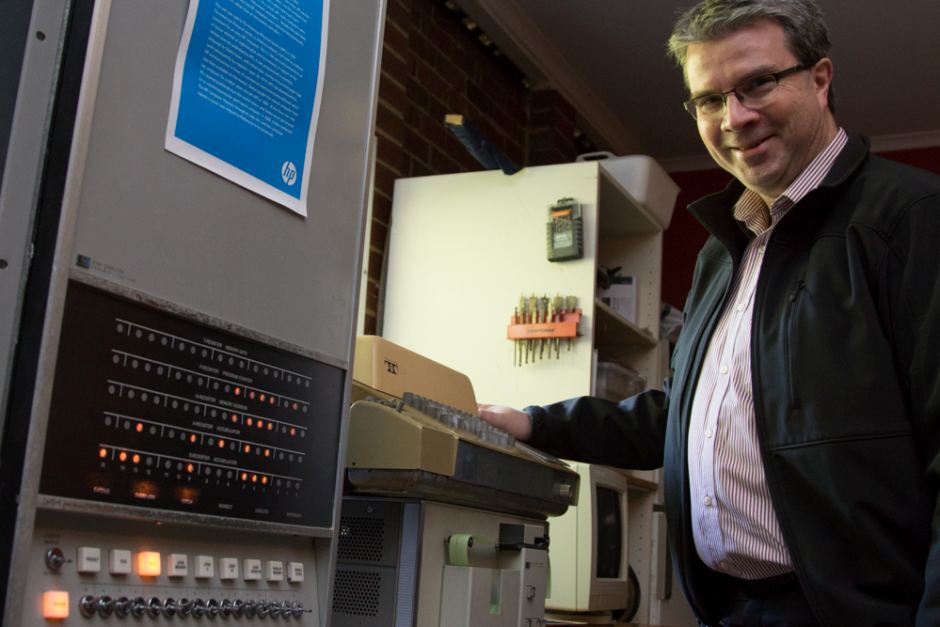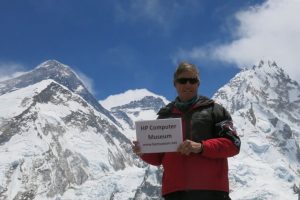From the ABC, original post here. By Simon Leo Brown, 774 ABC Melbourne.

A keen mountaineer who died trekking in Tibet has left a rare computer collection behind as his legacy.
Surrounded by bushland in the eastern suburbs of Melbourne is a wooden shed with barn doors.
It closely resembles a shed in California where, in 1939, Bill Hewlett and Dave Packard launched the company that would become HP.
The much larger Australian shed is home to the HP Computer Museum, filled with ageing computers, printers and calculators, most of which are a dull light grey.
“Dove grey, very hard to get these days,” former HP technician David Collins said, adding that HP had released a few machines with red panelling “but it never caught on”.

Mr Collins has taken up the challenge of fixing some of the older malfunctioning equipment, but he was not the one who amassed the collection.
It belonged to Jon Johnston, an American-born former HP employee who moved to Australia in 1989 with his wife Sue.
Many of the items he collected from clients who were upgrading their equipment, at first in his role at HP and later while running his own company selling HP products.
‘Revolutionary’ computer to turn 50 years old
Mr Collins first met Mr Johnston last year.
“As I started to have a little bit of spare time, with my kids getting a little bit more independent, I reached out to Jon knowing that he was literally just around the corner from where I lived,” Mr Collins said.
“He had all this great equipment in his museum, and from the [museum’s] website I could see that some of it needed fixing.”
He said Mr Johnston gave him a few minor, expendable items to repair — “in case I messed them up” — before suggesting he attempt to repair the museum’s most prized possession, the HP2116a.

Weighing more than 100 kilograms and lined with switches and dim orange lights, the bar refrigerator-sized 2116a cost $22,000 to buy when it was released in November 1966.
“This is the first 16-bit computer that HP ever released to the public,” Mr Collins said, adding that it was “quite revolutionary for its day”.
“They were tested and designed to be used in varying environments, almost down to freezing, right up to 55 degrees Celsius — that just wasn’t heard of in those days.”
HP built the computer as an instrument controller to be used on factory floors, on oil rigs and other harsh environments where computing power was required.
Until that point HP had mainly been an instrumentation company, Mr Collins said, and there had been some discussion between Hewlett and Packard as to whether they wanted to get into the computer business at all.
Working on computer like fixing a vintage car
The museum’s 2116a was donated by Sheila Issacs from Long Island, New York.
She had operated the machine at the American Physical Society where it was used for word processing until it was superseded.
When it was donated to the museum the 2116a had been dormant for some time, and by the time Mr Collins took it to his garage it required major repairs.
“I had to strip it right down,” Mr Collins said, adding that getting it working took “three months of working every spare hour I had”.
“The kids and the wife would know I was around only because there was a light on in the garage.”
He likened fixing the computer to working on a vintage car.
“Every time you switch it on you hope nothing goes bang.”
The wonderful thing about working on it is that it’s all old components, all things that are easy to work on and get going again.”
Mr Collins said he believed the museum’s 2116a was one of only five sold outside of the company.
“We’re really pleased to have this one up and running because we think it probably is, at the moment, the only one that is working in the world.”
Popular mountaineer’s ‘luck ran out’
Mr Collins said Mr Johnston had sold his business “when the time was right” and, with his three sons fully grown, was free to pursue his own interests.
He coached basketball, played American football and pursued an interest in films — in the bush not far from the museum he installed a fake cemetery he collected while working as an extra on iFrankenstein.
A lover of the outdoors since his time as a boy scout, Mr Johnston began climbing mountains as a 50-year-old, beginning with Mount Elbrus, the highest mountain in Europe.
“He went to Everest twice, last year and the year before, both around the times there were earthquakes and landslides,” Mr Collins said.

In April, less than a month after the 2116a was fixed, Mr Johnston travelled to Tibet to climb Shishapangma in preparation for a third attempt at Everest.
“Unfortunately on that one his luck ran out, because he didn’t come back,” Mr Collins said.
Mr Johnston, Swiss climber Patrik Mattioli and guide Julian Beermann were taking a rest break when the snow underneath them gave way, sending them freefalling into a deep crevasse.
Mr Beermann regained consciousness and was rescued but his companions remained motionless and could not be retrieved.
HP museum ‘special’
Mr Collins recalled attending a memorial gathering organised by Mr Johnston’s wife.
“It was amazing to see the number of people who came from all different walks of life that came just to be there, just to remember,” he said.
“Jon was just one of those guys that would make friends wherever he went.”
Having worked with Mr Johnston to fix the 2116a in time for its golden anniversary, Mr Collins offered to take on the running of the museum and its website.
“Sue and the boys, although they didn’t necessarily understand everything that went on in here with all this equipment, I think they could see from Jon’s love of it and his passion about it that it was something special,” Mr Collins said.
“This isn’t my baby, I’m just looking after it for now.”
